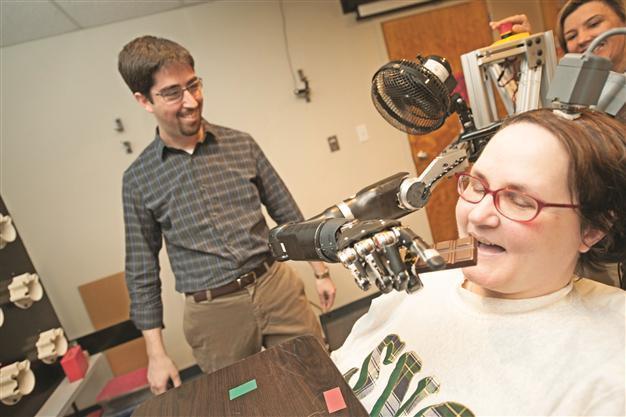Robotic arm gets closer than ever to human limb
LONDON - Reuters

Jan Scheuermann, who is paralysed from the neck down, is demonstrating the use of a new mind-controlled prosthetic arm with intuitive control. REUTERS photo
Researchers in the United States have developed a robotic arm controlled directly by thought with a level of agility closer than ever to a normal human limb.Jan Scheuermann, a 52 year-old woman who was diagnosed with a degenerative brain disorder 13 years ago and is paralyzed from the neck down, was able operate the robotic arm with a level of control and fluidity not seen before in this type of advanced prosthesis.
Experts are calling it a remarkable step forward for prosthetics controlled directly by the brain. Other systems have already allowed paralysed patients to type or write in freehand simply by thinking about the letters they want. A research team from the University of Pittsburgh Medical Center implanted two microelectrode devices into the woman’s left motor cortex, the part of the brain that initiates movement.
The medics used a real-time brain scanning technique called functional magnetic resonance imaging to find the exact part of the brain that lit up after the patient was asked to think about moving her now unresponsive arms.
The electrodes were connected to the robotic hand via a computer running a complex algorithm to translate the signals that mimics the way an unimpaired brain controls healthy limbs.
It took weeks of training for Scheuermann to master control of the hand, but she was able to move it after two days, and over time she completed tasks such as picking up objects, orientating them, and moving them to a target position with a 91.6 percent success rate. Her speed increased with practice.
The researchers plan to incorporate wireless technology to remove the need for a wired connection between the patient’s head and the prosthesis.
They also believe a sensory loop could be added that gives feedback to the brain, allowing the user to tell the difference between hot and cold, or smooth and rough surfaces.
















